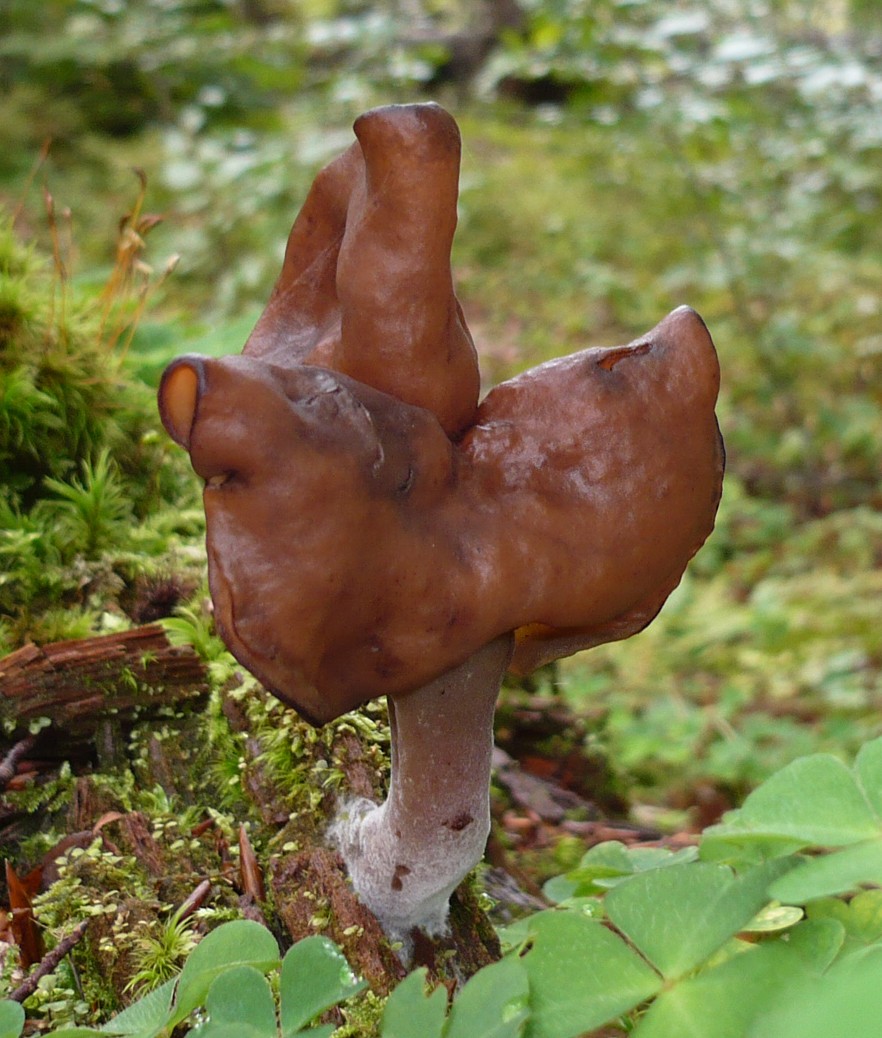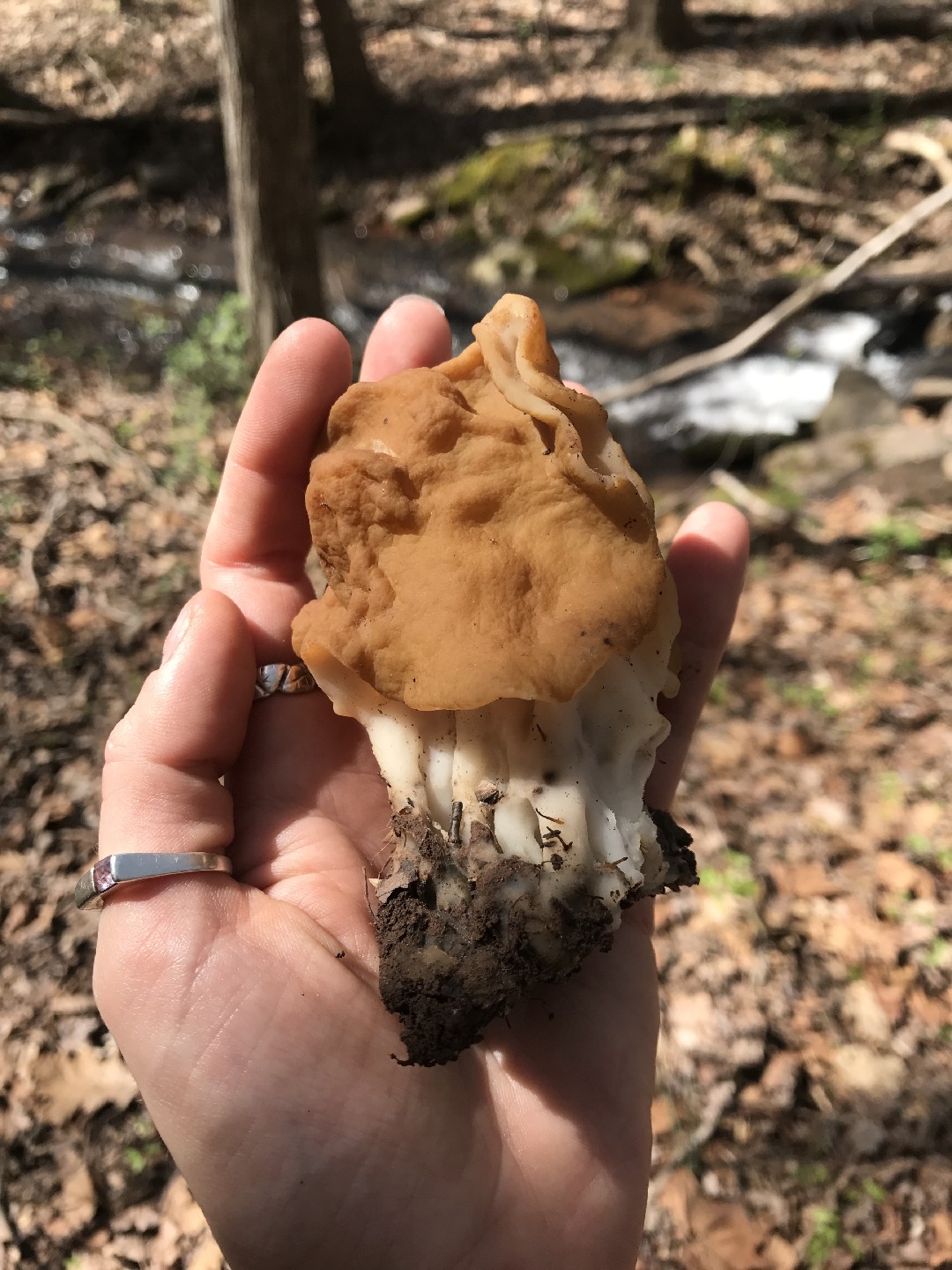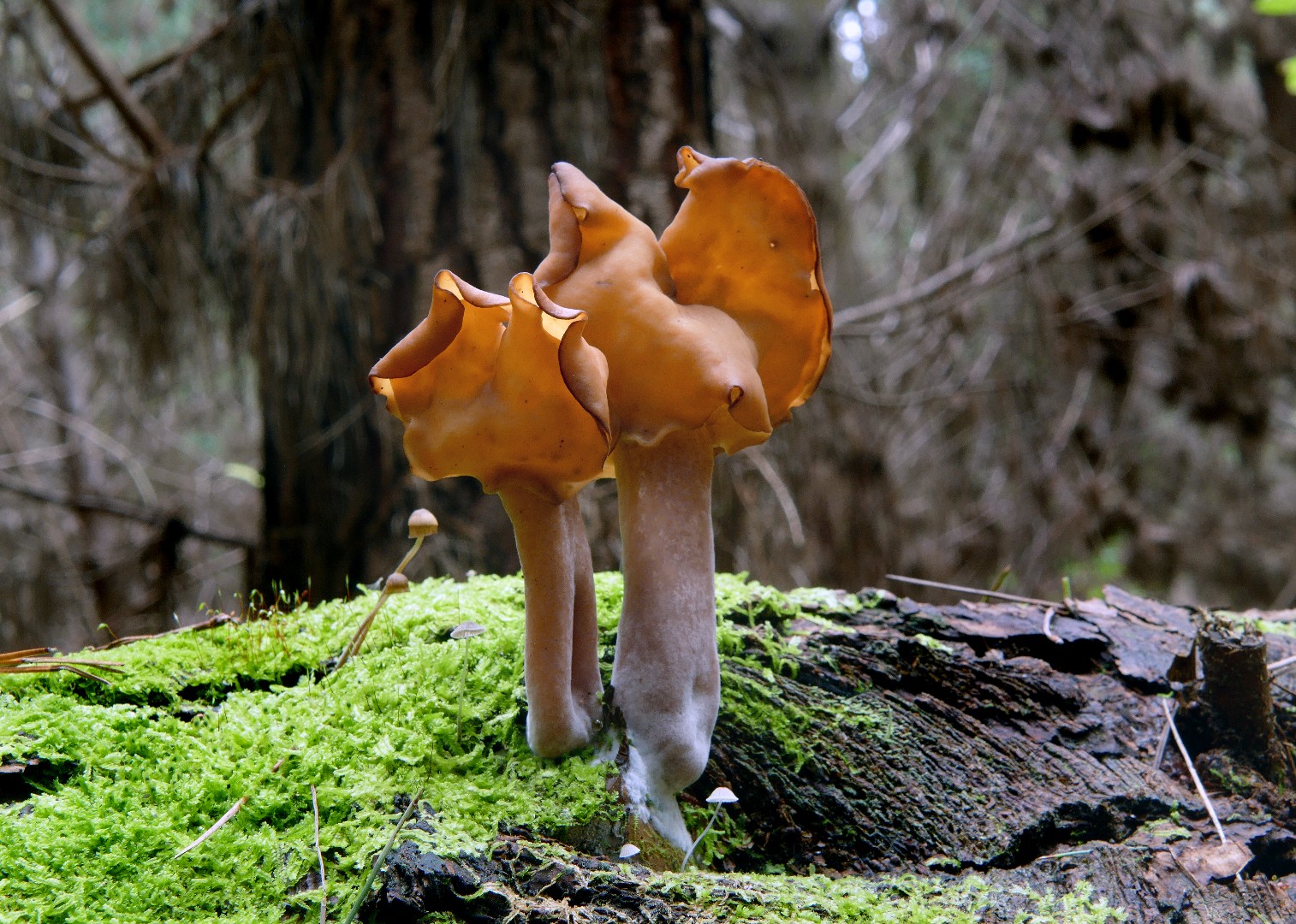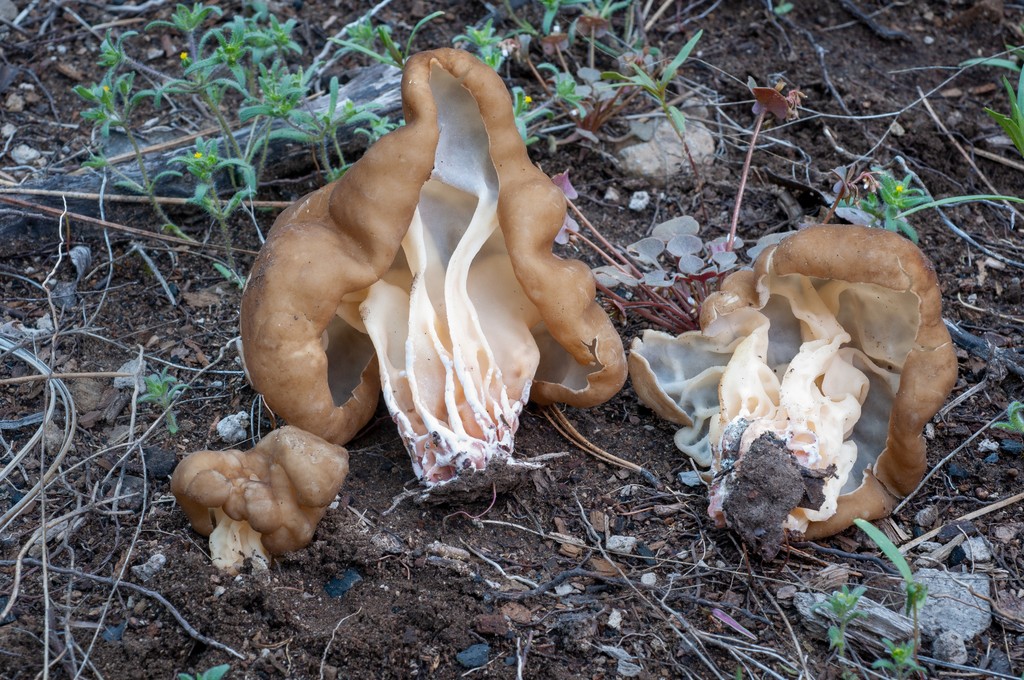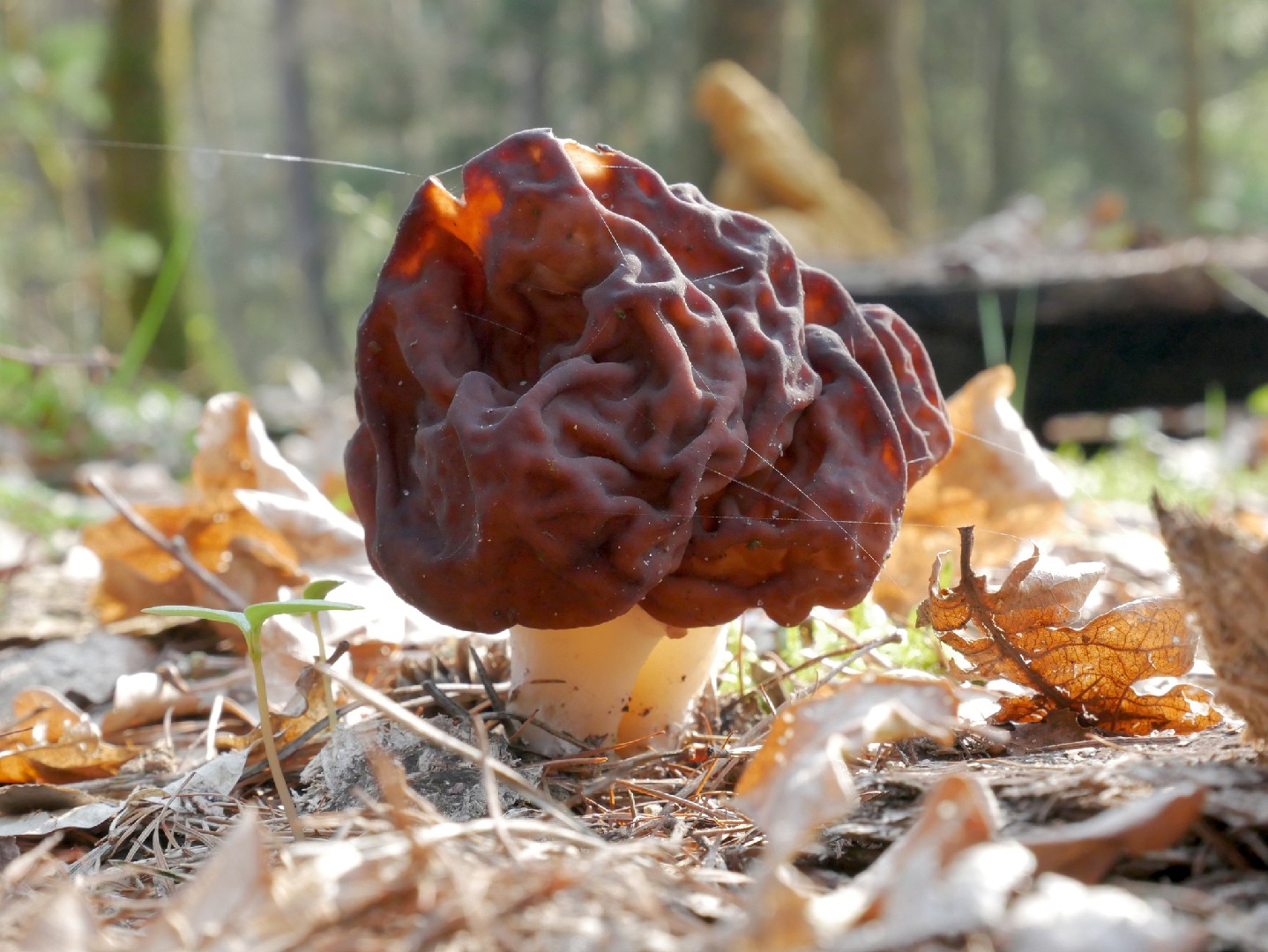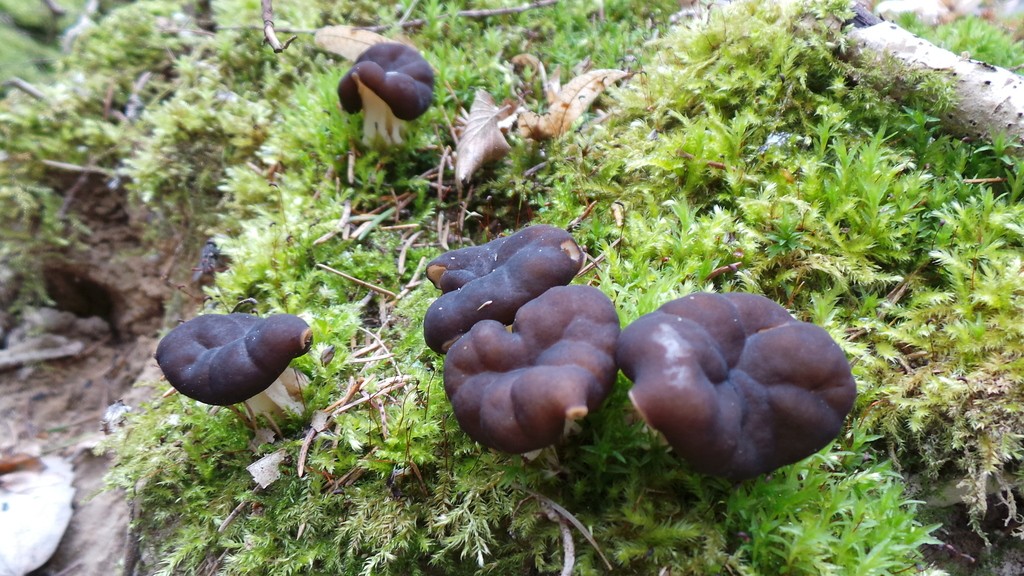False morel
Scientific name: Gyromitra
False morel
Scientific name: Gyromitra
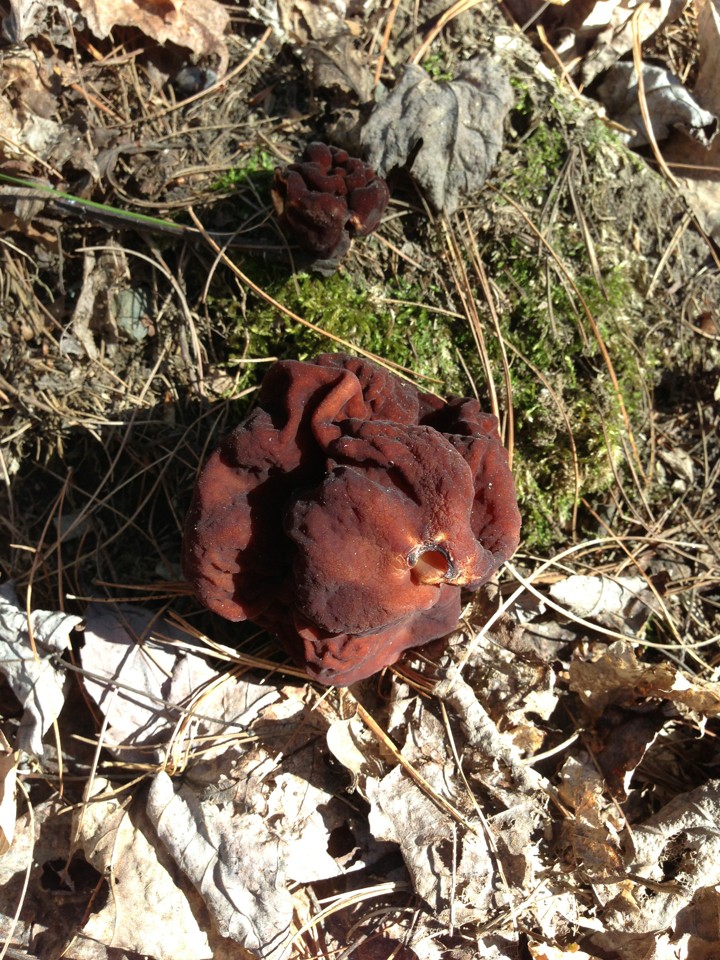 Photo By Charlie Hohn , used under CC-BY-4.0 /Cropped and compressed from original
Photo By Charlie Hohn , used under CC-BY-4.0 /Cropped and compressed from original Description
False morel is known for its distinct, brain-like appearance, often wrinkly and irregular in shape. These fungi can be found in both forests and open habitats, especially in spring. A peculiar characteristic is their preference for sandy soils and proximity to decaying plant material. Over time, false morel undergoes color changes, adding to its unique visual appeal. This group includes species adapted to different environments, highlighting the diverse ecological roles they play.
